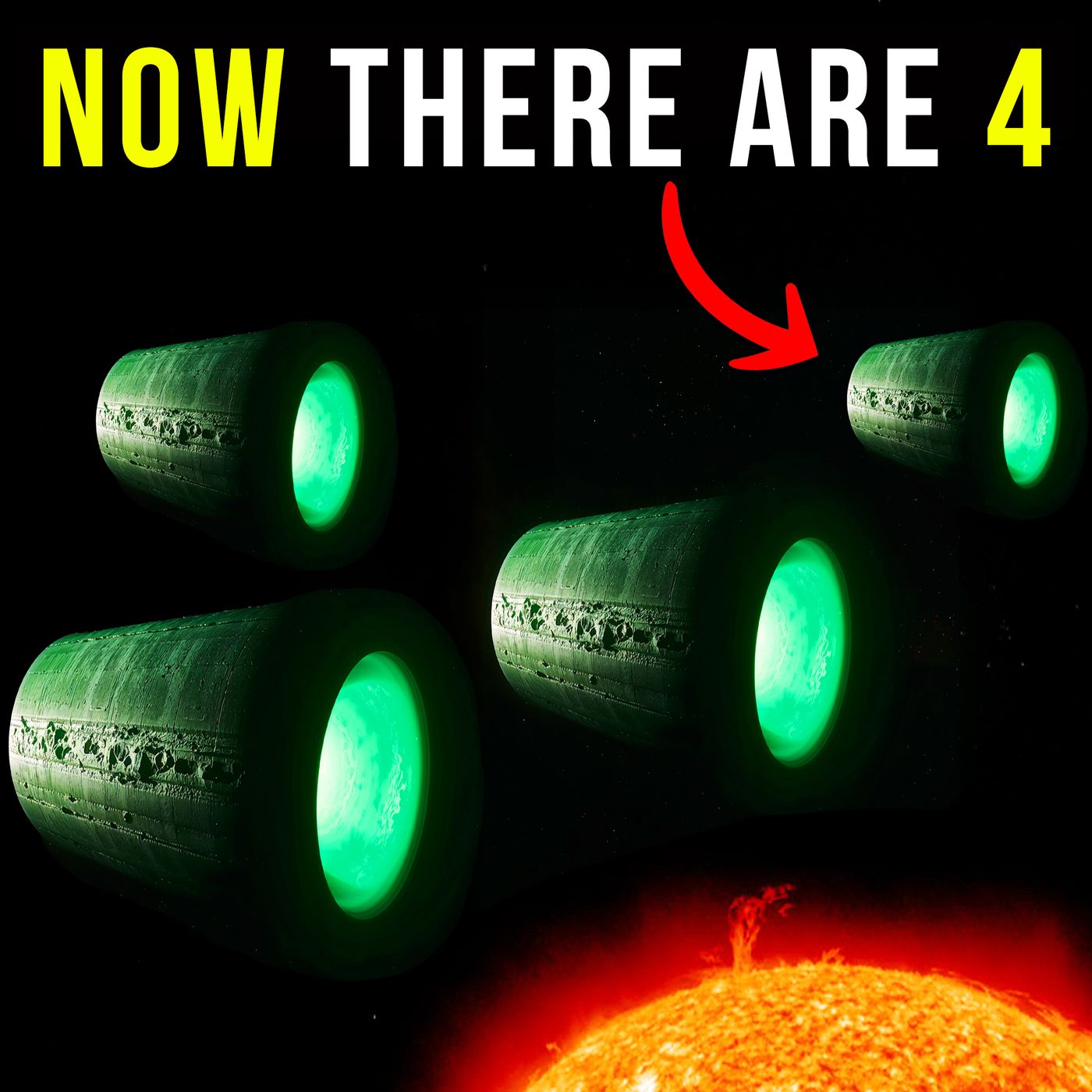Show Notes
Cristina Gomez reports on the latest 3I/ATLAS news regarding accompanying green objects converging in the solar system, and how these objects are breaking all the expected astronomy norms, and other UFO news updates.To see the VIDEO of this episode, click or copy link - https://youtu.be/1_Ter-8nm10
Visit my website with International UFO News, Articles, Videos, and Podcast direct links -www.ufonews.co
00:00 - Intro: Multiple Objects Detected
03:00 - Hollow Object Theory
05:30 - Data Suppression
07:02 - Statistical Probability
Become a supporter of this podcast: https://www.spreaker.com/podcast/strange-and-unexplained--5235662/support.
Show Transcript
We have an update on 3I Atlas, the interstellar comet racing through our solar system. New observations from Gemini Observatory North are raising serious questions about what we are actually looking at. The data suggests there might be multiple objects traveling with this comet, not just one, and we have the names of them. These include the C/2025 A6 Lemon, the C/2025 R2 SWAN, the C/2025 K1 Atlas, and of course, the interstellar object, the 3I Atlas. And then on top of that, amateur astronomers that are not just Avi Loeb are backing this up with their own analysis. Let us break down what we know, what we are seeing, and why this matters. As always, I am here to report the information without bias and you can decide what to believe. You can find the sources in my detailed articles at UFONews.co along with in the description box below. Hey UFOlogers, I am Cristina Gomez and welcome to this episode of UFO News Updates.
The Gemini Observatory North captured images of 3I Atlas that appear to show several objects around the comet. According to the latest images analyzed by skywatcher Turboziel on X, the objects around 3I Atlas are clearly visible in the images. And Turboziel's analysis shows distinct objects of light in proximity to the main body, supporting what other observers have been reporting. When amateur astronomer Stefan Burns posted his time-lapse animation online earlier this month, other astronomers immediately began their own analysis. A German user called Night Monkey claimed to see multiple objects, not just one comet. Multiple fast-moving points of light appear in the images. Another analyst by the name of Alexander Pflum pointed out something specific. At the three-second mark of Burns' animation, a brief green flash appears. This is not a camera artifact. This is a diffused glow, localized but distinct.
And here is where this gets really strange. Spectroscopic analysis from the Very Large Telescope in Chile showed that 3I Atlas is carbon chain depleted. It contains virtually no dicarbon. Dicarbon is the molecule that typically causes comets to glow green when energized by solar ultraviolet radiation. Without dicarbon, 3I Atlas should not be glowing green. Yet, ground-based photographs from early September clearly show a green hue developing around the object. Now, this ties to something Avi Loeb mentioned recently. Based on his calculations of the 3I Atlas trajectory and behavior, Loeb suggested that the object might be hollow or made out of very light material that we do not know about here on Earth. Think about what that means.
If 3I Atlas is indeed hollow or composed of material far less dense than typical comets, traveling at over 100,000 miles per hour through space should have torn it apart by now. Comets are fragile objects. They break apart from thermal stress, gravitational forces, or rotational stress. A hollow or extremely light object would be even more vulnerable. Yet, 3I Atlas is still intact. It survived a direct hit from a coronal mass ejection in early October, and it has been experiencing significant outgassing as it approaches the sun. All of these events should stress the structure of the object. But instead, the object remains intact. And now people are seeing multiple smaller objects around it. This raises a critical question. Are these broken pieces that have recently separated from the main body, or are they probes or companion objects that are traveling together from another star system?
If these are fragments, we would expect to see a debris trail. We would expect the main body to show signs of deterioration. If they are not fragments, then what are they? If 3I Atlas is hollow, that could explain the water release pattern. A study published in the Astrophysical Journal Letters reveals that the comet is releasing water vapor at an extraordinary rate, roughly 88 pounds per second. The observation comes from NASA's Neil Gehrels Swift Space Telescope when the comet was approximately three astronomical units from the sun. That is three times the distance between the Earth and the sun. Now, most comets do not begin releasing significant water until much later.
By this time, spacecraft positioned near Mars should capture detailed images that Earth-based telescopes cannot provide while the comet is behind the sun from our perspective. But the question is, will the public get those images ever. When 3I Atlas swings back into full view in the next few weeks, astronomers will have another chance to study it with a full array of instruments. The questions are piling up. What is causing the water release so far from the sun? Are we looking at one object or multiple objects traveling together? And what explains the green glow when spectroscopic data shows there should not be enough dicarbon to produce it?
If multiple objects are confirmed around 3I Atlas, it would represent a major development in our understanding of interstellar visitors and how material travels between star systems. But here is what makes this story even more compelling: the high-resolution data that could answer the questions about 3I Atlas have not been made public. We are relying on amateur astronomers right now and others to piece together what is actually happening. NASA, ESA, and other major space agencies have been notably quiet, and this pattern is not new. Oumuamua, Borisov, and now 3I Atlas. The data exists, but the full picture is not being shared.
Does that sound familiar? Because we have seen the exact same pattern with UAP. Military encounters, radar data, video footage, and then very little information actually reaches the public. Both stories involve the same institutional reluctance to share complete information. Both involve objects that challenge our understanding of physics and even propulsion. If 3I Atlas is confirmed to be carrying multiple objects across interstellar space, that would fundamentally change the conversation about non-human technology. Could this be the catalyst that opens the floodgates? If amateur astronomers force the issue, major institutions may have no choice but to release the data they are withholding. And if that data confirms multiple objects or even artificial structures, the implications would be enormous, not just for astronomy, but for the entire conversation about what governments have known for decades.
In a clip from an interview, Avi Loeb explains his concerns about the statistical probability of these objects. When asked what he means by there not being enough rock, Loeb responds: "Well, yes, because there is limited reservoir of rocky material per unit volume in interstellar space. And even if you package all of it in objects of this size or bigger, then there is just not enough number of objects to deliver them at random once per decade to the inner solar system."
Here is a question for you. If multiple objects are confirmed around 3I Atlas and if the United States has been operating advanced technology for decades, what does that tell us about what we know versus what exists? Drop your thoughts in the comments. I am Cristina Gomez and that is it for today. I will see you again tomorrow at 10 AM PST for another UFO News Update. Be safe and remember, keep your eyes on the skies.
.png)


Comments & Upvotes